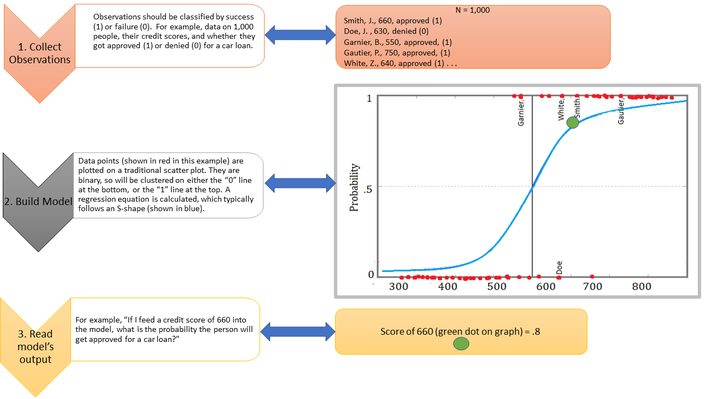Logistic regression is regressing data to a line (i.e. finding an average of sorts) so you can fit data to a particular equation and make predictions for your data. This type of regression is a good choice when modeling binary variables, which happen frequently in real life (e.g. work or don’t work, marry or don’t marry, buy a house or rent…). The logistic regression model is popular, in part, because it gives probabilities between 0 and 1. Let’s say you were modeling a risk of credit default: values closer to 0 indicate a tiny risk, while values closer to 1 mean a very high risk. The following image shows an example of how one might tailor a logistic model for credit score based risk.

Click on the picture to zoom in
References
Hilbe, J. (2016). Practical Guide to Logistic Regression. CRC Press.
DSC Resources
- Free Book and Resources for DSC Members
- New Perspectives on Statistical Distributions and Deep Learning
- Time series, Growth Modeling and Data Science Wizardy
- Statistical Concepts Explained in Simple English
- Machine Learning Concepts Explained in One Picture
- Comprehensive Repository of Data Science and ML Resources
- Advanced Machine Learning with Basic Excel
- Difference between ML, Data Science, AI, Deep Learning, and Statistics
- Selected Business Analytics, Data Science and ML articles
- How to Automatically Determine the Number of Clusters in your Data
- Fascinating New Results in the Theory of Randomness
- Hire a Data Scientist | Search DSC | Find a Job
- Post a Blog | Forum Questions
